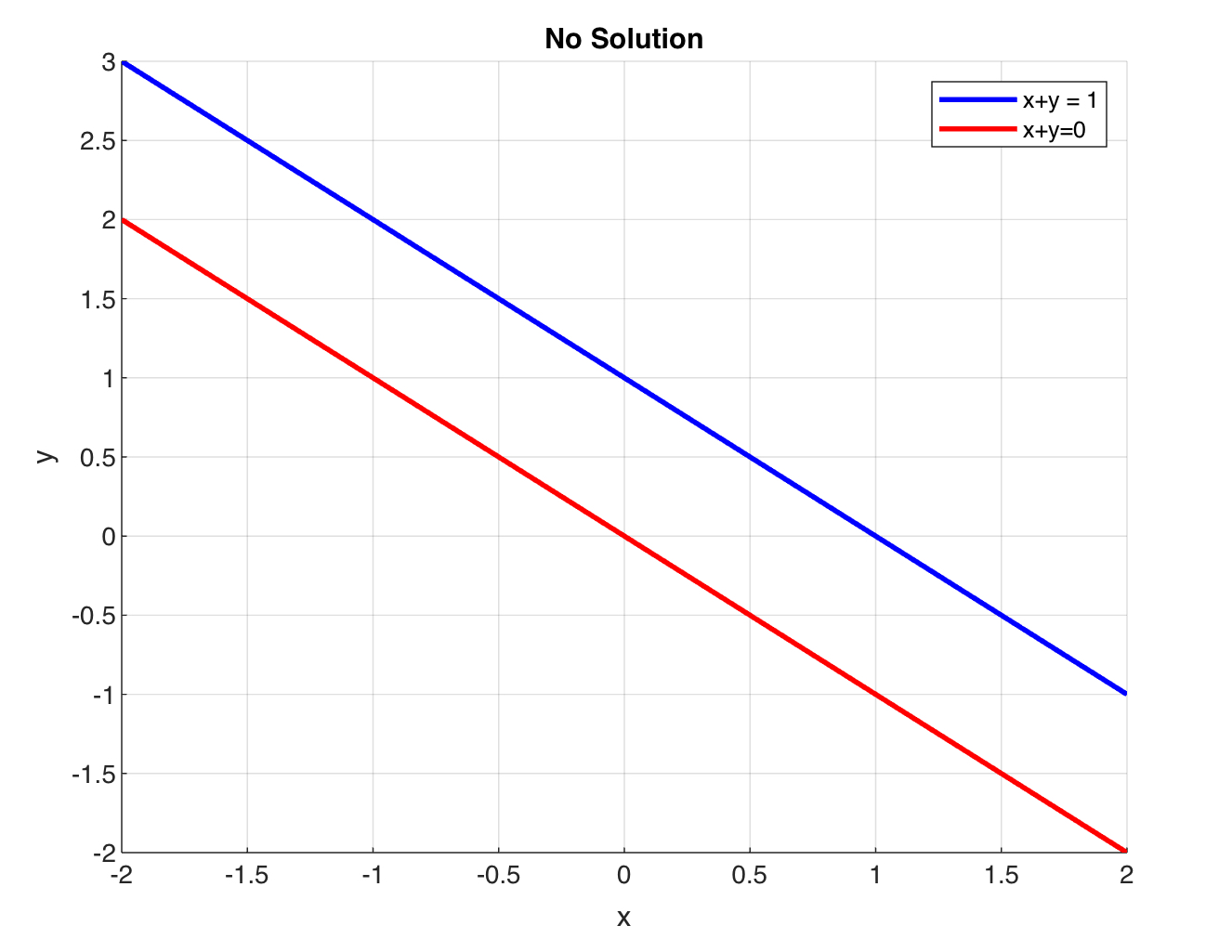3.2. Systems of linear equations#
A system of linear equations has the form:
There are n unknown variables, \((x_1, \cdots, x_n)\) and m equations. The m equations have coefficients \(a_{mn}\) for each of the n variables and m right-hand side values \((b_1, \cdots, b_m)\). These equations be rewritten using matrices and vectors:
or in shorthand:
A system of linear equations can have:
No solution (inconsistent equations)
One solution
Infinitely many solutions (undetermined)
For example, consider the following graphs of different systems of 2 equations:
\(x+y = 1\), \(x+y = 0\)

This system of equations has no solution because the two lines are parallel and never intersect.
\(x + y = 1\), \(2x - y = 0\)

This system of equations has one solution because the two lines intersect at a point.
\(x+y = 1\), \(2x + 2y = 2\)

This system of equations has infinitely many solutions because the two lines are parallel and completely overlap.